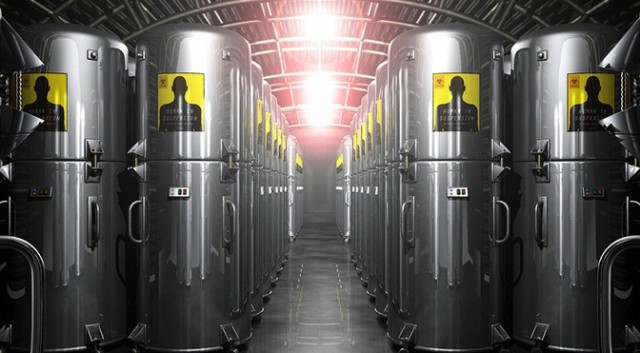Cryogenics can be very useful to us in the future if the defrosting can be mastered to bring a human out of deep freeze intact. Obviously, it is much easier said and imagined in theory. It is of course, illegal to freeze a living person and cryonics means living and frozen. There are people with terminal diseases who have volunteered to be frozen, but even these are technically dead when the process starts. A terminal patient dies in as much as the heart monitor goes dead, but the neurological part may not have yet shut down. Therefore the subject is not brain dead.
This when our Cryogenic scientists spring into action and anyone who imagines a group of having go mercenaries might be forgiven. The technically dead people are wrapped and quickly rushed off by a team of scientists who are discovering as they go. The body enters a cryogenic chamber and is nothing more than a specimen lab rat that previously hoped for the best and is perhaps – still hoping.
Ice can preserve, while a body remains frozen. It can even stop ageing, but defrosting back to life is a whole new challenge. We freeze embryos and have been able to produce life from them after defrosting and placing into a uterus, but multiple celled creatures like human beings cause great problems for cryogenic scientists, who search for ways of prolonging life and bringing someone out of cryogenic freezing intact.
The fact that no human has been successfully brought out of cryogenic freezing intact is not too encouraging either, but this does not mean it can’t be done one day. We know some amphibious life has come out of frozen stasis because these creatures have a protein in their cells that activate in cold temperatures. This acts like antifreeze which protects the cells when thawing. It stops crystallization.
When you see a minute magnified ice crystal under a microscope; imagine it in a human cell - a minute sack with a membrane wall. The little sharp stalagmite edges would rupture such membranes. Imagine if it is what happens inside every human cell when frozen. Perhaps the best way to explain the damage is to visualize a gigantic model of a body as tall as a building. The wall and internal organs have been made out of bubble wrap. Each bubble of all these millions upon millions of bubbles gets filled with liquid. We see this epidermis of bubble wrap in the shape of a giant person. Then we freeze it. All the liquid inside each bubble becomes sharp crystal stalactites and stalagmites it also expands inside each bubble. The plastic of each bubble’s wall would puncture and when the model cooled down all the liquid would run out of the bubble wrap
.
Such ice crystals would puncture our cell walls and as we defrost our cell structures can't contain water and we turn to mush. That is why we can't defrost frozen people. Cryogenic scientists still live in hope and nanotechnology combined with stem cell research offer potential methods of overcoming the problem of cell crystallisation. Some biotech researchers are boldly speculating that we may defrost a cryogenically frozen patient by 2045. It is rather rash, perhaps, but we have speculated about things in the past that have come to be.
If the secrets of successful cryogenics can be mastered, transhumanism begins to gain more ground in the quest for human flawlessness.




No comments:
Post a Comment